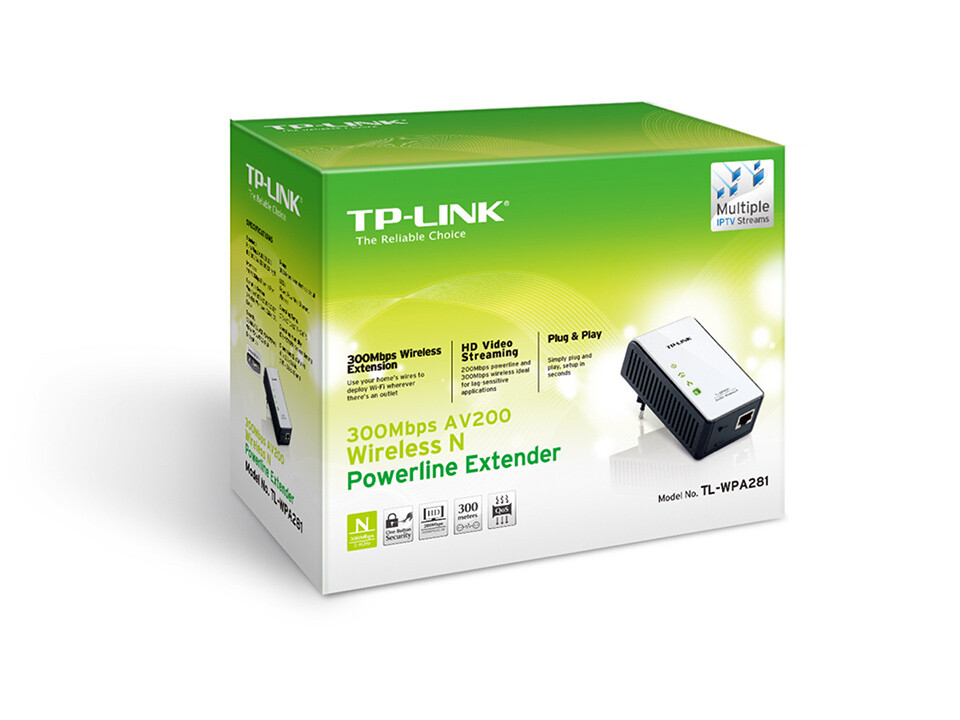FOR CALL ASSISTANCE +254 207870580
TP-Link TL-WPA281 300Mbps AV200 Wireless N Powerline Extender
KES 11 040.00
On Sale
Normal Price KES 12 000.00 Save 8%
Product Details
Brand: TP-Link
- 300Mbps Wireless N Rate—Extend Wireless Coverage
- HomePlug AV standard compliant, high-speed data transfer rates of up to 200Mbps1
- Super small design with a new exterior, blends discreetly in front of any power outlet
- No new wires, Easy Plug and Play operation, No configuration required
What This Product Does
TP-LINK’s Wireless N Powerline Extender Starter Kit extends an Internet connection to every room of the house over existing electrical circuitry. All devices in the room have two options to get access to TL-WPA281, whether through wireless or using an Ethernet cable. With 200Mbps Powerline link rate and 300Mbps wireless N rate, it is ideal for bandwidth consuming or interruption sensitive applications like video streaming, online gaming and Internet calls. With TL-WPA281, Internet can be available everywhere in your house.
Up to 200Mbps, 300 Meters
With advanced HomePlug AV technology, TL-WPA281 provides users with stable, high-speed data transfer rates of up to 200Mbps on a circuit length of up to 300 meters. Together with its built-in Qos and powerful AES encryption, the TL-WPA281 is a great choice for a whole home solution to connect all network compatible devices--from computers and game consoles, to set-top boxes for IPTV, printers and NAS.
300Mbps Wireless N Rate—Extend Your Wireless Coverage
With wireless speeds of up to 300Mbps, users can effortlessly extend their networks via their home’s existing electrical circuitry and broadcast a wireless signal to another area of their home or office.
Multiple HD Video Streams
With 200Mbps powerline and 300Mbps wireless speeds, the TL-WPA281 is ideal for lag-sensitive applications.
Pair Button for Easy Network Security
Simply by pushing the Pair button on the adapters, users can set up a hassle-free Powerline network within minutes, complete with 128-bit AES encryption for network security and data protection.
1. Plug the adapter into the power outlet
2. Connect the device via the network cable to the adapter
3. Press the encryption buttons—and you're done!
WPS One-Button Security
Compatible with Wi-Fi Protected Setup™ (WPS), TL-WPA281 features WPS One-Button Security Setup that allows users to almost instantly setup their security simply by pressing the "WPS" button on the adapter, automatically establishing a WPA2 secure connection, which is more secure than WEP encryptions. Not only is this faster than normal security setups but more convenient in that you don't need to remember a password!
Support QoS for Advanced Multiple-media Optimization
The device’s Quality of Service (QoS) function prioritizes the bandwidth requirements of data traffic. Users can choose which type of traffic they will use -- Internet, Online Game, Audio, Video or VoIP and the QoS functions will guarantee clear, instant reproduction of that application, even when other applications are running on the network at the same time.
In stock
1
Save this product for later
TP-Link TL-WPA281 300Mbps AV200 Wireless N Powerline Extender
Display prices in:KES

